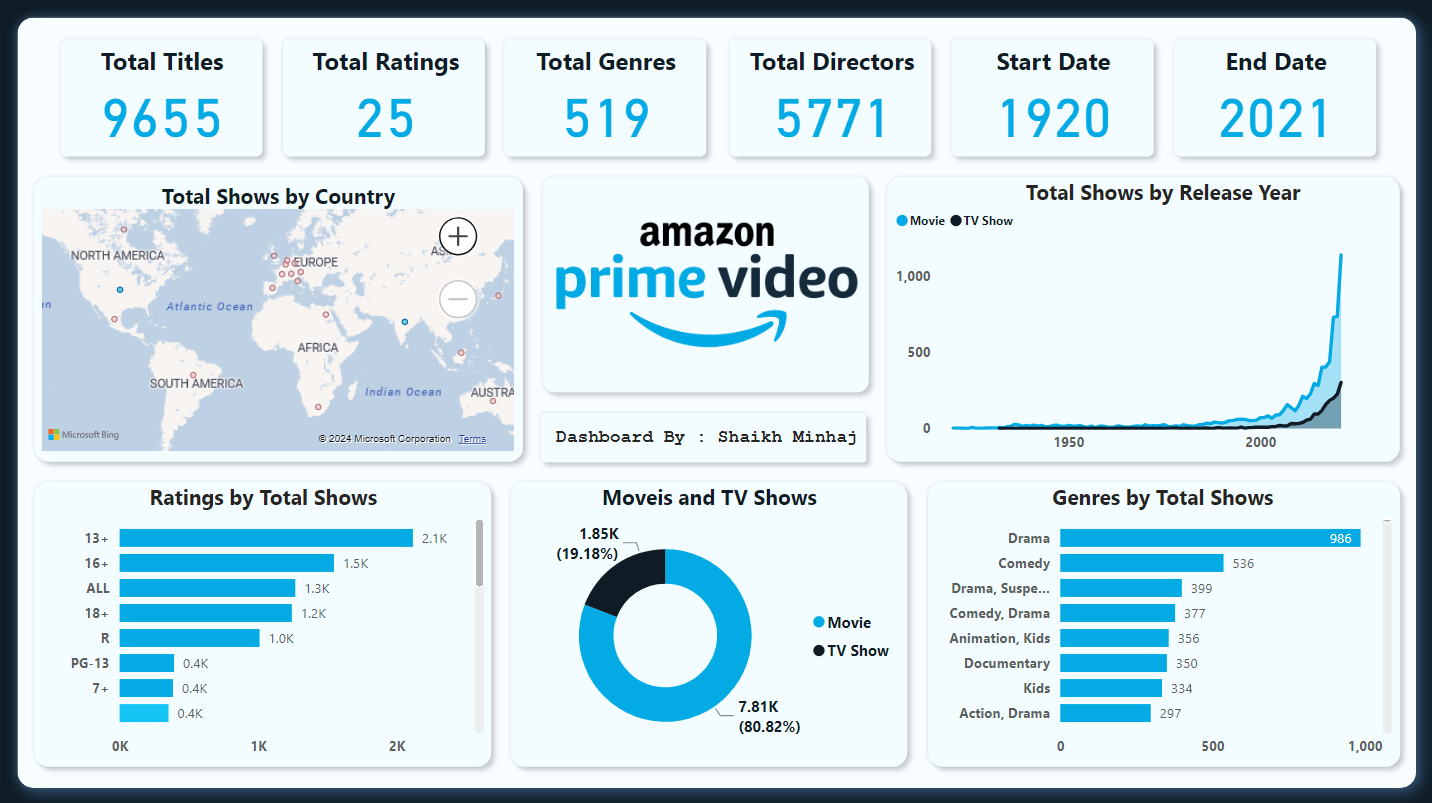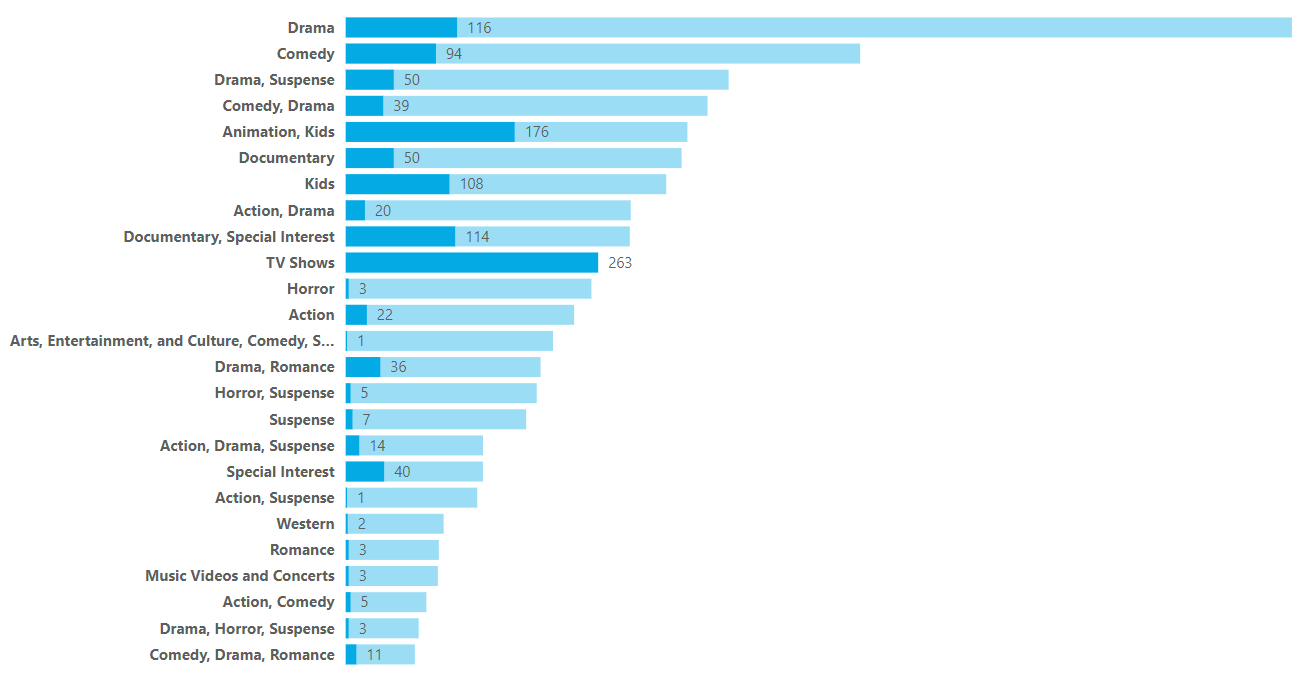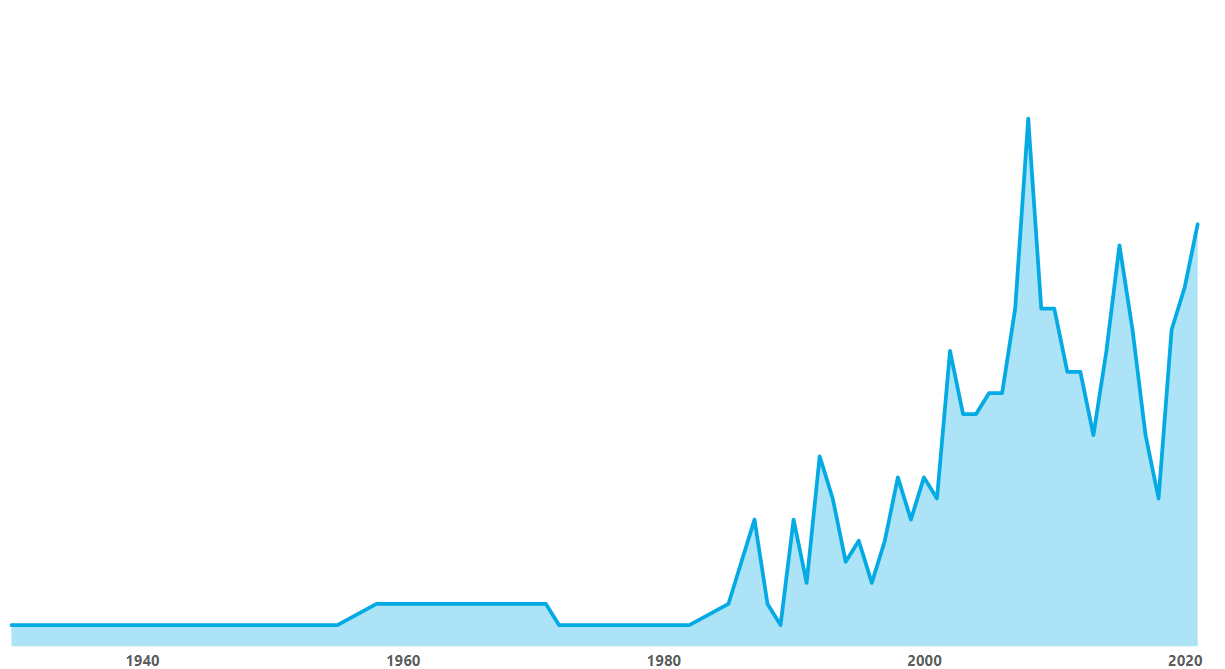This project focuses on creating a dynamic content analytics dashboard for Amazon Prime Video, providing valuable insights into key metrics that can drive content and marketing decisions.
Aim of the Project 🎯: The aim of this project is to develop a comprehensive content analytics dashboard for Amazon Prime Video, using its extensive media dataset to help visualize and analyze key metrics for strategic decision-making in content and marketing.
Project Description 📃: The project utilizes Power BI and Excel to create a content analytics dashboard that analyzes Amazon Prime Video's dataset, offering insights on content genres, viewer preferences, and geographical content distribution.
Project Phases:
- Data Extraction and Cleaning: Extracted data from Kaggle and cleaned using Excel and Power BI for accurate and actionable insights.
- Content Analysis with Power BI: Developed visualizations to break down content by genres, types, and geographical distribution to identify trends and preferences.
- Dashboard Creation: Built a dynamic dashboard to visualize KPIs such as total titles, ratings, genres, and country-wise content distribution.
Steps involved in the process:
- Data Integration 📊: Integrated datasets from Kaggle into Power BI for visual analysis.
- Content Type Breakdown 🛠️: Analyzed the ratio of movies vs. TV shows and identified the focus of content production.
- Genre Popularity Analysis 🎥: Created visualizations to understand genre trends and assist in content strategy formulation.
- Global Distribution Mapping 🌍: Mapped the total shows by country to highlight global content reach and localization efforts.
Important Insight: The data reveals that Amazon Prime Video has a substantial focus on movies, with a need to potentially expand its TV show offerings to balance viewer preferences.
Conclusion: The Amazon Prime Video Dashboard offers valuable insights into content trends, production focus, and viewer preferences, supporting strategic decisions in content development and marketing efforts.
Key Learnings:
- Data-Driven Content Strategy: Leveraging content data for informed decisions.
- Global Content Reach: Understanding geographical content distribution and localization.
- Genre Trends: Identifying popular genres and areas for content expansion.
- Viewer Preferences: Using data to drive decisions around movies vs. TV shows.
Future Scope:
- TV Show Expansion: Focusing on increasing TV show offerings to balance the content library.
- Enhanced Localization: Analyzing and improving localization efforts for global content reach.
- Genre Diversification: Exploring new genres to cater to evolving viewer tastes.
- Advanced Viewer Insights: Utilizing AI and machine learning to predict viewer preferences and trends.


